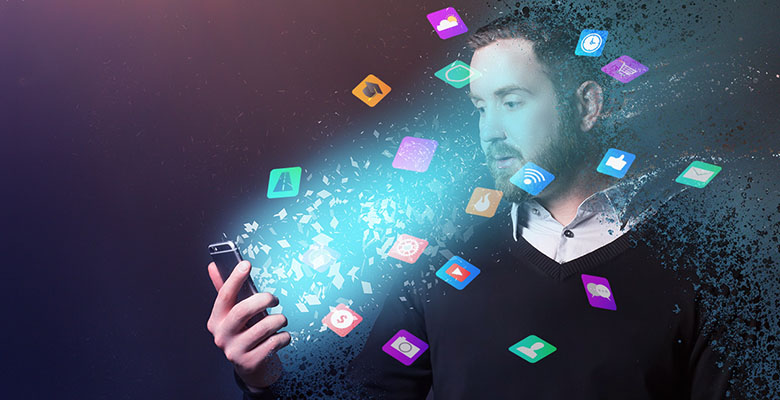What is Digital Friction?
If you work at a desk job, there is a 100% chance that your work is impacted by technology. In fact, it’s likely that even if you don’t spend your day facing a computer screen, technology plays a role at work in some capacity. It’s also likely that you and your peers face digital friction at work, even if you don’t realize it.
Digital friction, the unnecessary effort an employee must exert to use technology, is a detriment to employee productivity. It includes the extra steps taken to complete routine tasks, having to toggle between disparate applications to find information, and the complicated workflows that take time away from meaningful work.
The causes of digital friction can be attributed to three main culprits:
Application overload – the ever-expanding range of applications and sources where information and activity are hosted.
Information overload – the volume of content, conversations, activity, interactions, tasks, and information employees are expected to continually process.
Digital noise pollution – the exponential echo effect of signals, pings, and chimes vying for employees’ attention.
The average employee interacts with 35 applications a day, often context switching more than 1,100 times each day. You might be asking, “so what?”
Context switching is just the beginning. Digital friction comes in many shapes – including notification fatigue, complicated login processes, and cumbersome user interfaces riddled with unnecessary steps. These may seem like small challenges, but digital friction isn’t just increasing frustration, it’s also causing a domino effect that’s bad for business.
Missing Important Communications - Employees frequently miss important announcements and time-sensitive reminders.
Delayed Approvals - Managers lose approvals amongst other emails, blocking important work or requests from being completed.
Time Wasted from Context Switching - Employees lose valuable time jumping from one system to another to complete tasks or lookup common information.
Ignored Intranet Content and Communications - Information on the company intranet and other communications isn’t personalized enough for employees to actually stop and read.
So, what can be done to stop this pervasive threat to the health and wellness of both your employees and your business?
Strategize
One of the best ways to start reducing digital friction is to prioritize an employee-centric approach to technology. As one of the main contributors to friction is application overload, it’s critical to think employee-first when it comes to technology. It’s not about taking away or changing the systems in your tech stack, but rather being strategic about when, where, and how employees interact with them.
Consider the steps to submit an IT service ticket. It probably goes something like this: You open the company intranet, search for the IT help desk link, complete the authentication steps to login to the IT system, create the ticket, fill out the details, submit the ticket, navigate to your email to see the ticket has been opened, start messaging on Microsoft Teams with the person who opened the ticket, and finally resolve the issue, all the while trying to finish the presentation for your 3 o’clock meeting.
What if you could simply open Microsoft Teams, and use a chatbot to open and submit the IT ticket? Meeting employees within the flow of work, with the tools they need, when they need it, gives employees more time to focus on actual responsibilities.

Centralize
With major productivity inhibitors like context switching making it harder for employees to get work done, centralized access to information becomes a game changer. Skipping the tedious login processes by providing single-click access to the information employees need to know, like their time off balance or pay data, is an easy win for digital workplace owners.
For example, the Workgrid digital assistant surfaces microapps via an omni-present toolbar on the intranet. From the toolbar, employees can navigate to a microapp with consolidated time off balance information, without having to log into the system itself. They can quickly see any communications, notifications, and tasks that need their attention all in the same place.

Guide
The idea that a person could see notifications, act on tasks, and review information all within one place speaks to another major contributor to digital friction: digital noise pollution. The noise created by constant pings and dings vying for employees’ attention across systems is quieted when consolidated with a digital assistant.
In most workplaces today, it’s likely that employees receive their communications in a variety of ways, with email being the primary hub. But inboxes remain cluttered, filled with junk mail, sales pitches, notifications of tags, comments, and upcoming due dates, missed conversations, and the occasional office update. What if you could complete the expense approval with just the click of a button? What if the office construction update wasn’t buried underneath 50 unread messages?
Elevating approvals, corporate communications, required trainings, and HR alerts outside of the email inbox and into a streamlined flow answers those questions. Let’s consider the steps involved with an approval. Perhaps you receive a one sentence email notifying you of an approval you must complete. You begin the steps of the process, leaving your email inbox, logging into the system, finding the approval at hand, and finally completing the task. A digital assistant can simply guide the employee attention to an approval when it needs to be completed, and it can be done in the digital workplace channels employees already work in.
Even better – an intelligent notification stream not only elevates important information to employees in a targeted and personalized manner, but it can also remove messages when they are no longer relevant, keeping the chaos at bay, and employees focused on the tasks at hand.

Automate
With ChatGPT and similar AI technologies becoming more mainstream it’s only natural that more automated processes make their way into the digital workplace. While organizations may be hesitant to fully embrace AI, small improvements such as pro-active nudges can make big impacts on the work day.
Workgrid has started to embrace nudgetech, recently launching several apps to help employees with a variety of tasks from missed message reminders to travel itinerary reminders. These sorts of nudges can not only help with practical tasks, like nudging an employee to respond to unfinished conversations, but they can also support overall well-being, like encouraging employees to take time off when they haven’t in a while or prompting them to block off some quiet time when they have a calendar full of meetings. Integrations with systems like Microsoft Outlook or SAP Concur can make these nudges automated and specific to each employee.

Enhance
One of the best ways to ease digital friction is to enhance existing technology rather than simply adding more. Amplifying adoption of tools like the intranet through integrations and custom apps opens the door for employees to more easily leverage the systems in place. With the help of a digital assistant, integrations are easier and faster to implement. The intranet has long been a resource in the digital workplace but far too often has been underutilized, with many organizations simply treating it as a link farm. With integrations, it becomes a digital destination employees visit and utilize regularly.

Employee experience benefits from reducing friction long term
Today an individual’s employee experience begins even before their first day of work. From onboarding to offboarding, the digital employee experience is involved every step of the way. Reducing digital friction not only helps employees focus, but it can transform how work gets done. Start optimizing your existing technology – learn more about how the Workgrid digital assistant can help.



